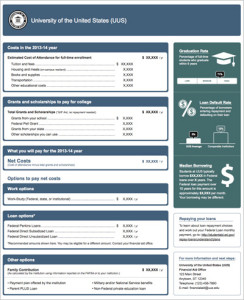My fellow college expert, Wendy David-Gaines, shared some insight into this college practice. This article originally appeared on her site: 5 Questions to Ask About Financial Aid Front Loading.

If you think your washing machine is the only front loader, watch out because your college may be taking you to the cleaners. Front loading happens when colleges make their most generous financial aid award offers to applicants as a lure to attend. When students return the following year they may find their school has dropped their previously awarded grants and scholarships. Thousands of dollars may have been lost to the common practice of front loading.
“About half of all colleges front-load their grants, according to financial aid expert Mark Kantrowitz, who analyzed data from the National Center for Education Statistic’s Integrated Postsecondary Education Data System,” according to DailyFinance.
The lesson for parents and their college-bound students is to carefully scrutinize, analyze and question each item in their financial aid awards before bothering to compare one college’s offer to another. It may turn out that freshman year is a best deal at one place but if the total years until graduation are tallied, another choice may be the better bargain.
[ctt title=”Is the college front loading on your financial aid award to lure your student?” tweet=”Is the college front loading on your #finaid award to lure your student? http://ctt.ec/0dJdS+ via @suzanneshaffer” coverup=”0dJdS”]
Here are five questions to ask the college financial aid officer:
Is the grant/scholarship renewable and if so for how many years? What you want is the money to continue until the student graduates. Bear in mind it is taking longer, four to six years, for those who graduate to do so. Find out the maximum number of times the award will be made.
What are the strings attached to keeping the grant/scholarship? It’s important to understand the terms of receiving free money awards before acceptance to make sure the student can and will perform them. He may have to keep his grades up, play an instrument, or be a member on a team. Find out the eligibility requirements each year including any additional paperwork necessary to keep them.
If the grant/scholarship is lost, what will replace it? Often student loans are the college’s substitution plan. However, there may be other grants/scholarships available. Ask about them and the application process. Be prepared to continue searching for these and have a college finance Plan B.
Will the college bill increase in following years and if so, by how much? Those renewable grants/scholarships may no longer cover the same portion of college costs if tuition rises. See what if any cost components like tuition/fees and room/board are capped or held at the freshmen level.
Will the grant/scholarship be increased to keep pace with any raised college costs? Be aware most colleges will not match tuition increases or increase free money aid when tuition rates increase. However, the college bill must continue to be paid.











